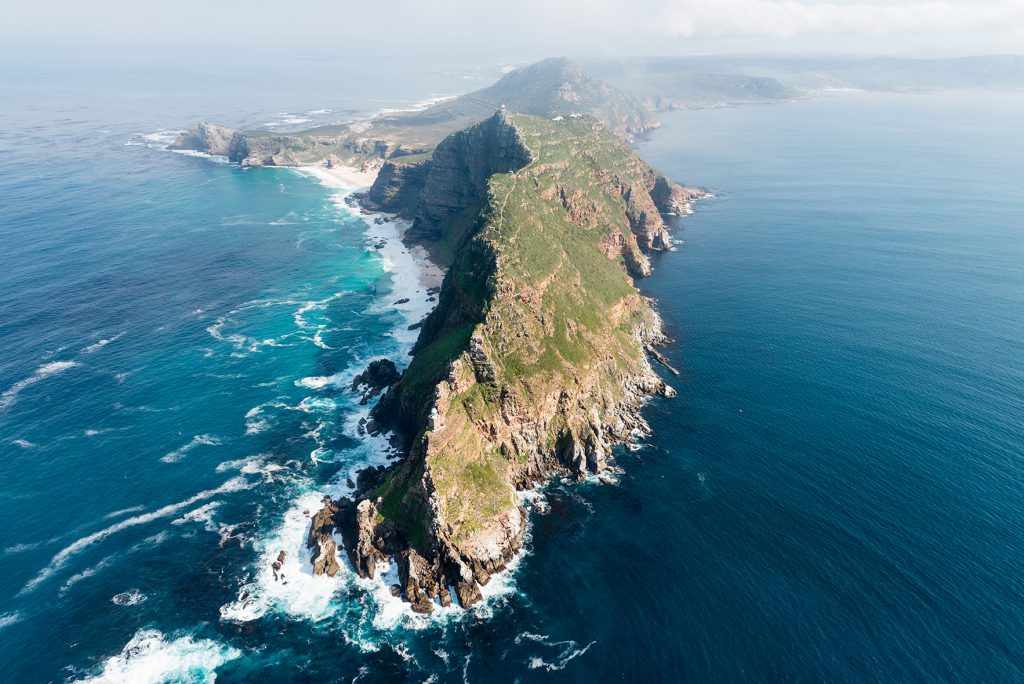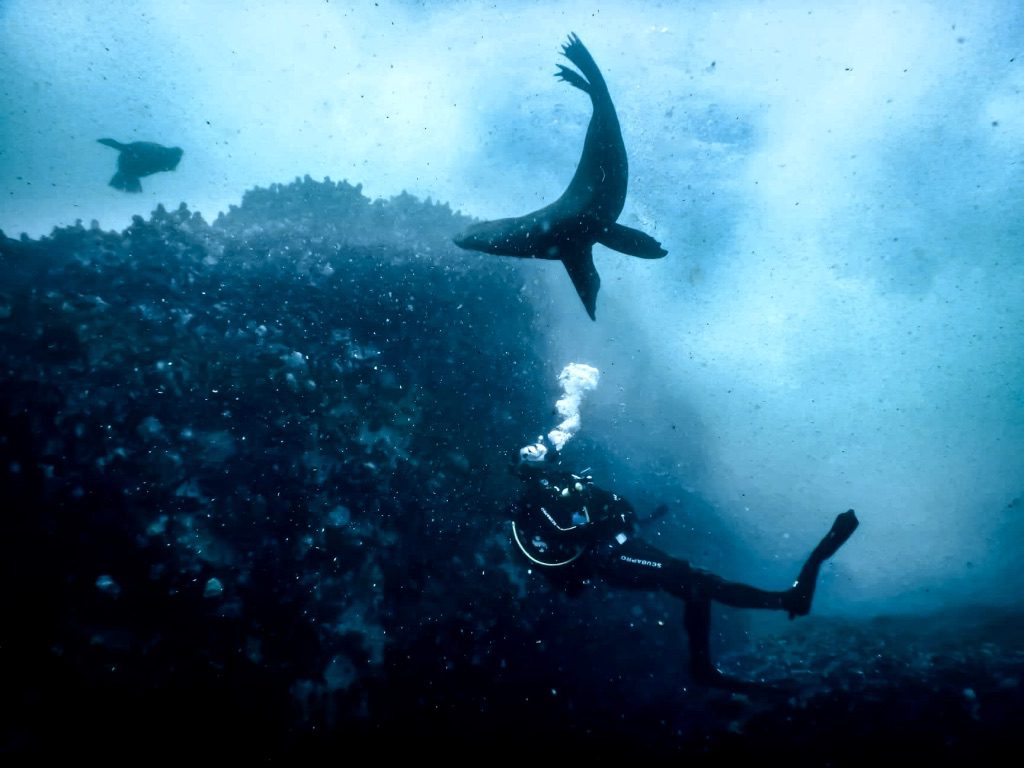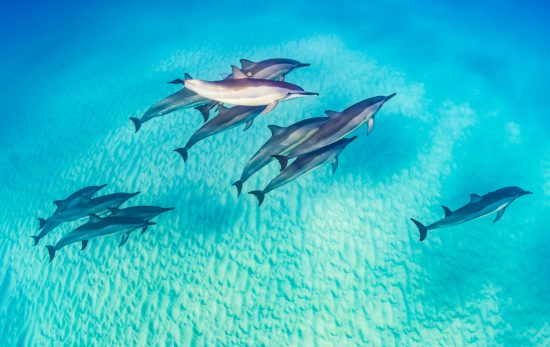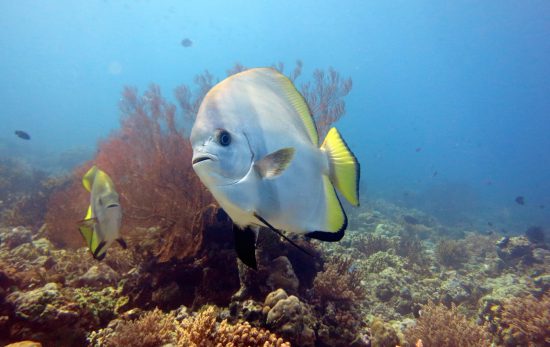Contrary to popular lore, there is no definitive line in the ocean at Cape Point, South Africa. This might be a disappointment to some, but I find the reality all the more intriguing. At the nethermost point of Africa the Benguela current draws frigid waters from the Southern Ocean. They ride up the western shores while warmer water travels down the eastern seaboard with the Agulhas current. These waters originate in the Indian Ocean, and the antagonistic pair become entangled as they frolic along the coastline. Every year the Atlantic reaches its arm along the Indian side of South Africa. The Sardines give chase, and humpback whales migrate in pursuit of their prey. The contrast of the two oceans’ ecologies means that the area around Cape Point is an abundant fraternization of sea life.
The swell was heavy as we approached Partridge rock, and we had taken a reasonable beating on the journey there. Waves surged around and then rolled into a cauldron of white froth on the leeward side of the outcrop, where a colony of cape fur seals basked in the morning sun. As we came near, some slid and flopped clumsily into the rolling surf. We swiftly joined them.

The seabed was a jagged beach of shattered mussel shells, and starfish gripped the bottom with long sand-coloured arms.
Four of us descended amidst the turbulence, through the fizz until the water became clear and swashed with a steady rhythm. The seabed was a jagged beach of shattered mussel shells, and starfish gripped the bottom with long sand-coloured arms. Where the waves couldn’t tear them from their perch, a dense garden of corals covered the rock; they spread themselves thinly across patches of stone, while others jutted out in chimneys and branches. Perhaps more subtle in shape than their tropical counterparts, their colours and patterns are baffling, and a tremendous endorsement for cold water diving. Aquamarine, green, spotted, and high-vis-jacket orange. My colour vocabulary cannot do them justice.
All of a sudden a dark figure swept by. Then another brushed against my fin. I turned to find a pair of attentive black eyes looking back into mine, and a set of grey whiskers set atop them. The seal was somewhat smaller than I, and upside down. I inverted myself so that I might join them, and we studied each other with great intent as I strived to maintain some form of upended buoyancy.
The connection was there, like that of a human and dog, except that this animal had maintained its wildness, holding on to its place in the ecological meshwork.

There was an impalpable bond between us, although our evolutionary histories diverged too long ago to comprehend, seals come under the same suborder (Caniformia) as our closest companions, Canidae. The connection was there, like that of a human and dog, except that this animal had maintained its wildness, holding on to its place in the ecological meshwork. I began to envy the seal for it had gripped firmly on its roots while I cast myself as far from mine as possible. We chose to draw ourselves out of that intricate network along with the domestic dog, and perhaps the seal was questioning why I had forced myself to break rank, and become a foreigner beneath the waves.
I was quickly reminded of how different we are when the seal turned and elegantly glided with the wave of a pectoral fin, vanishing to the foggy surface. I fumbled with my gear, flailing my arms as I regained an upright position, feeling quite a misplaced fool. Equipment and training, no matter how good, will never be able to contend with millions of years of natural selection, and feeling out of place is something that I often experience when I dive. But perhaps it is that sense of unfamiliarity and mystery that draws me, and means that diving will never become ordinary.
Table mountain is not far from here, and it’s characteristically steep sides are emulated where the marine landscape drops quickly away.
For twenty minutes we hung around the rock and watched as seals plunged and twisted. Now they were showing off, and as one naïve pup grew too confident, he took fright and turned from me in panic. Once playtime was over we drifted deeper, through the fronds and branches of a forest of kelp. The swell still held authority here, and we swayed together with the kelp, being careful not to crash against the boulders that plunged into the abyss. Table mountain is not far from here, and it’s characteristically steep sides are emulated where the marine landscape drops quickly away. It is a feature that brought greater variety to the dive as we fell past terraces of ecology. In doing so we passed through a steep thermocline, and I became grateful for the 10mm of neoprene that stood between me and the harsh water.

Seals are a natural prey for great white sharks, a species well known to visit South Africa’s coast. However, here at Cape Point, the dark shy shark we came across was only the length of my forearm. Cloaked against the kelp, it lay still on a rock. My attention was quickly drawn from the small shark as something bigger moved beyond it. I briefly mistook what I saw for a manta ray, due to its enormity. But the body was thick, and the tail short and flat. Where a manta ray might be a French crepe, this was an American pancake. I beckoned my dive buddy over, but the huge fish was gliding nonchalantly into the dark. It was a short-tailed sting ray, the second largest ray in the world. It has become infamous with the death of Steve Irwin, but here it posed no threat. This was a creature totally different from me, and a glaring contrast to the cape fur seal. It showed no interest, and simply wanted to be left alone.
The complexity of this environment extends to the terrestrial world, where penguins gambol on beaches, and the flora on table mountain makes it a world heritage site, hosting more species of plant than the whole of the United Kingdom. The city itself is a hotspot of culture, and the entire synthesis makes Cape Town a spectacular and accessible dive location.
Inspired? Find out more about diving in South Africa and look for local PADI dive shops
About the Author
Alex McMaster grew up on the rugged west coast of Ireland where the sea, mountains and forests cultivated his love for the wild. When these had been explored, he was drawn away on sailing expeditions in Oceania, Europe and the Arctic. Whether on the high seas or a trans-continental bike ride, he always has a dive mask to hand to find out what lies below the surface of a place. That ethos extends to his desire to know the intricacies of each point and person that he encounters on his journeys. Alex lives in Scotland, where he is a student.

